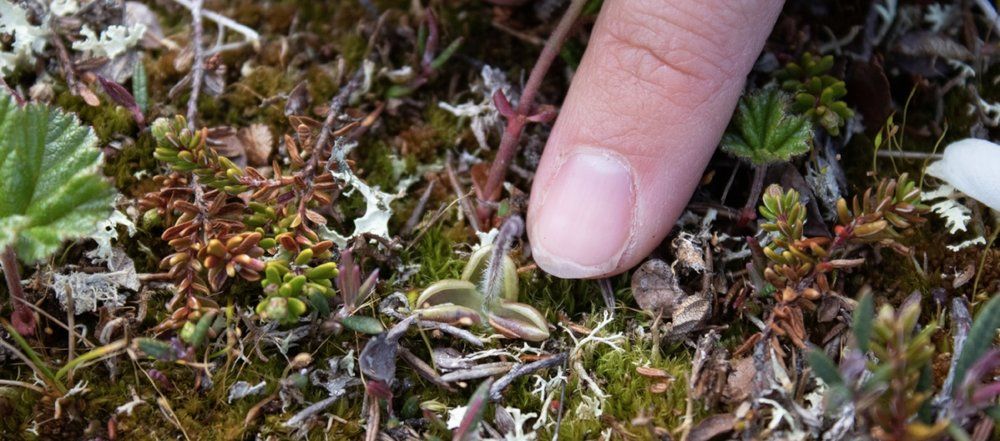EPISODE DESCRIPTION
Ice is often beautiful. Even dramatic. We can photograph sea ice from space. We can hike up to—and onto—land ice, like glaciers and ice sheets. But permafrost, which is frozen soil, isn't so flashy or charismatic. It operates under the cover of darkness, below ground, hidden from view. In fact, there's permafrost in the photograph above, just a few feet below the hand of Dr. Gesche Blume-Werry, but you'd probably never know it.
Gesche is a scientist I met in Abisko, Sweden last summer, and she says permafrost intrigues her in part because it is so mysterious. But what really drives her work is the desire to understand this crucial part of the Arctic ecosystem, because the fate of permafrost in our warming world has huge consequences for all of life on Earth. Find out why on episode three of Threshold.
SEASON TWO: COLD COMFORT
The Arctic is warming twice as fast as the rest of planet, and that has big consequences for all of us. But satellite images of melting sea ice don't begin to tell the whole story. Four million people live in the Arctic, and they’ve been dealing with the effects of climate change for decades. We wanted to hear from them in this pivotal moment—when the ground is literally shifting beneath their feet.
For Threshold season two, we went on a circumpolar journey to find out what the Arctic is, how it is changing, and why that matters.
We traveled on four-wheelers and fishing boats, bush planes and dog sleds. We camped out on the Greenland ice sheet with a team of scientists and hung out with Inuit rock stars in Canada. We visited all eight Arctic countries, and we discovered countless stories unfolding in the far north. Climate change is just the tip of the iceberg.
LEARN MORE
ARCTIC LAKES AND METHANE
This short video from NASA explores how Arctic lakes could soon be a major source of atmospheric methane.
PERMAFROST
New data from two Arctic sites suggest some surface layers are no longer freezing. Find out what that means for people experiencing it first-hand and how it could accelerate climate change in this article from National Geographic.
